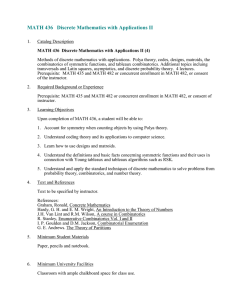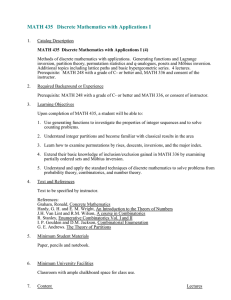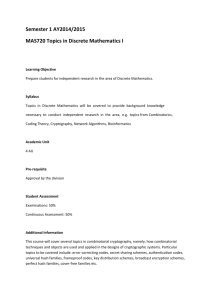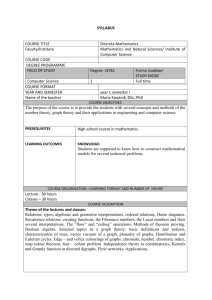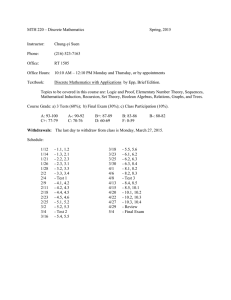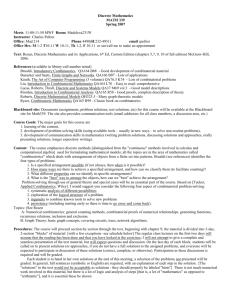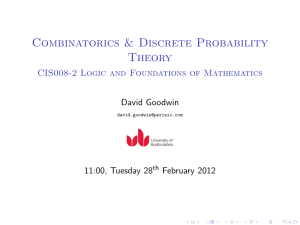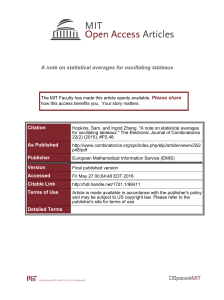MATH 531 Discrete Mathematics with Applications II
advertisement
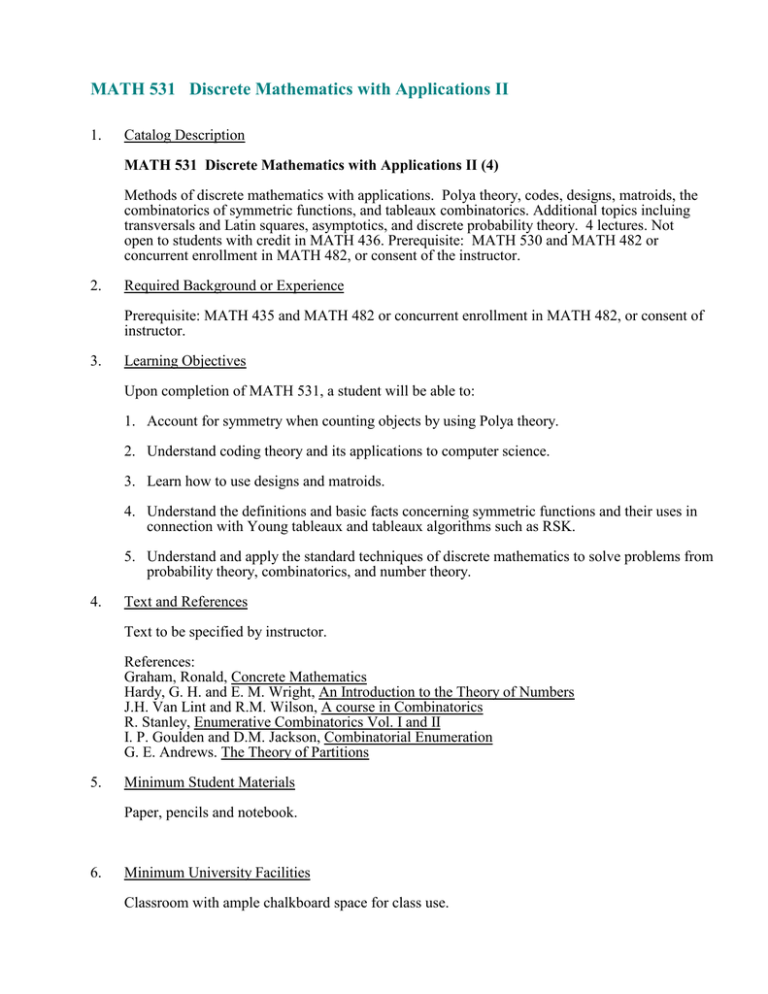
MATH 531 Discrete Mathematics with Applications II 1. Catalog Description MATH 531 Discrete Mathematics with Applications II (4) Methods of discrete mathematics with applications. Polya theory, codes, designs, matroids, the combinatorics of symmetric functions, and tableaux combinatorics. Additional topics incluing transversals and Latin squares, asymptotics, and discrete probability theory. 4 lectures. Not open to students with credit in MATH 436. Prerequisite: MATH 530 and MATH 482 or concurrent enrollment in MATH 482, or consent of the instructor. 2. Required Background or Experience Prerequisite: MATH 435 and MATH 482 or concurrent enrollment in MATH 482, or consent of instructor. 3. Learning Objectives Upon completion of MATH 531, a student will be able to: 1. Account for symmetry when counting objects by using Polya theory. 2. Understand coding theory and its applications to computer science. 3. Learn how to use designs and matroids. 4. Understand the definitions and basic facts concerning symmetric functions and their uses in connection with Young tableaux and tableaux algorithms such as RSK. 5. Understand and apply the standard techniques of discrete mathematics to solve problems from probability theory, combinatorics, and number theory. 4. Text and References Text to be specified by instructor. References: Graham, Ronald, Concrete Mathematics Hardy, G. H. and E. M. Wright, An Introduction to the Theory of Numbers J.H. Van Lint and R.M. Wilson, A course in Combinatorics R. Stanley, Enumerative Combinatorics Vol. I and II I. P. Goulden and D.M. Jackson, Combinatorial Enumeration G. E. Andrews. The Theory of Partitions 5. Minimum Student Materials Paper, pencils and notebook. 6. Minimum University Facilities Classroom with ample chalkboard space for class use. Math 531 page 2. 7. Content Lectures 1. 2. 3. 4. 5. 6. 5 10 5 5 5 5 Polya theory Codes and designs Matroids The combinatorics of symmetric functions Tableaux combinatorics Discrete probablility theory and/or asymptotics and/or transversals/Latin squares and /or other advanced topics selected by instructor (time permitting) ________ Total 35 Note: The topics covered in MATH 436 are identical to those covered in MATH 531. MATH 531 is the graduate level version of MATH 436, and requires additional work for the graduate students enrolled in the course. Students in MATH 531 will be responsible for supplementary exercises and additional readings, and a presentation or project on the additional readings. Students will be prohibited from taking MATH 436 and MATH 531. 8. Methods of Assessment The primary methods of assessment are, in decreasing order of importance: essay examinations and homework. Typically, there will be two or three hour-long examinations during the quarter, and a comprehensive final examination. Students are required to show their work, and are graded not only on the correctness of their answers, but also on their understanding of the concepts and techniques. Regular homework is required. These assessment methods are uses for each of the learning outcomes above.
